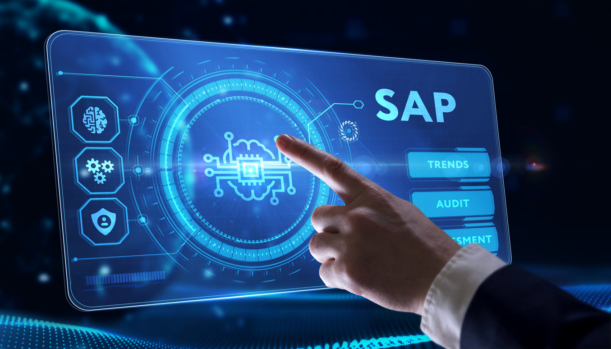SAP Software – It stands as a powerful tool utilized by businesses worldwide to orchestrate and streamline a myriad of operational facets. In this comprehensive exploration, we embark on a journey to unravel the intricacies of SAP software, shedding light on its origins, functionalities, and significance in modern business landscapes.
What is SAP Software?
History and Evolution of SAP
SAP was founded in 1972 by five former IBM employees in Germany. Initially, it focused on developing standard software for real-time business processing. Over the years, SAP has evolved into a multinational corporation, offering a wide range of software solutions tailored to different industries and business needs.
Key Features of SAP Software
User-Friendly Interface
SAP software boasts an intuitive interface that enables users to navigate seamlessly through various modules and perform tasks efficiently.
Integration Capabilities
One of the standout features of SAP is its ability to integrate with other systems and applications, allowing for seamless data exchange and interoperability.
Customization Options
SAP offers extensive customization options, enabling businesses to tailor the software to their specific requirements and workflows.
Scalability
Whether a small startup or a multinational corporation, SAP software scales to accommodate the needs of businesses of all sizes, ensuring flexibility and adaptability.
Security
SAP places a strong emphasis on security, implementing robust measures to safeguard sensitive data and protect against cyber threats.
Industries Using SAP
SAP software is utilized across various industries, including manufacturing, retail, healthcare, finance, automotive, and more. Its versatility makes it suitable for businesses operating in diverse sectors.
Popular SAP Modules
SAP ERP
Enterprise Resource Planning module helps businesses manage core processes such as finance, procurement, production, sales, and distribution.
SAP S/4HANA
SAP’s next-generation ERP suite built on the SAP HANA platform, offering real-time analytics and simplified data models.
SAP CRM
Customer Relationship Management module enables businesses to manage customer interactions, sales, marketing, and service-related processes.
SAP SCM
Supply Chain Management module facilitates efficient planning, execution, and monitoring of supply chain activities, ensuring optimal inventory management and logistics.
SAP BI/BW
Business Intelligence/Business Warehouse module provides tools for data analysis, reporting, and decision support, empowering businesses to derive insights from their data.
SAP SuccessFactors
Human Capital Management module assists in managing HR processes, including recruitment, performance management, training, and payroll.
Benefits of SAP Software
Increased Efficiency
By automating repetitive tasks and streamlining processes, SAP software enhances operational efficiency, allowing businesses to achieve more with less effort.
Streamlined Processes
SAP enables end-to-end integration of business processes, eliminating silos and inefficiencies, and fostering collaboration across departments.
Enhanced Decision Making
With real-time data insights and analytics capabilities, SAP equips businesses with the information needed to make informed decisions and drive strategic initiatives.
Better Customer Experience
By centralizing customer data and enabling personalized interactions, SAP helps businesses deliver superior customer experiences, driving loyalty and satisfaction.
Challenges of Implementing SAP
Cost
Implementing SAP software can be costly, requiring significant upfront investment in licenses, infrastructure, and implementation services.
Complexity
The complexity of SAP software and the customization options available can make implementation and maintenance challenging, requiring skilled personnel and resources.
Resistance to Change
Introducing SAP software often entails changes to existing workflows and processes, which can meet resistance from employees accustomed to traditional methods.
Integration Issues
Integrating SAP with existing systems and applications can be complex, requiring careful planning and execution to ensure seamless interoperability.
Future Trends in SAP
-
Cloud Adoption: The shift towards cloud computing is expected to accelerate, with more businesses opting for cloud-based SAP solutions to gain flexibility, scalability, and cost-effectiveness.
-
Artificial Intelligence (AI) and Machine Learning (ML): is integrating AI and ML capabilities into its software to enable predictive analytics, automation of routine tasks, and personalized user experiences, driving efficiency and innovation.
-
Internet of Things (IoT):is leveraging IoT technology to connect devices, sensors, and machines, enabling real-time monitoring, data collection, and analysis to optimize asset performance, improve operational efficiency, and drive predictive maintenance.
-
Blockchain Technology: SAP is exploring the potential of blockchain technology to enhance transparency, traceability, and security in supply chain management, financial transactions, and digital identity management.
-
Industry-specific Solutions: SAP is focusing on developing industry-specific solutions tailored to the unique requirements of different sectors such as healthcare, retail, manufacturing, and utilities, enabling businesses to address specific challenges and seize opportunities for growth.
-
Sustainability and Environmental Management: is incorporating sustainability and environmental management features into its software to help businesses track, measure, and optimize their environmental impact, comply with regulations, and achieve sustainability goals.
-
Enhanced User Experience: is investing in improving the user experience of its software through intuitive interfaces, personalized dashboards, and mobile-friendly applications, enhancing user productivity and satisfaction.
-
Integration with Emerging Technologies: SAP is integrating emerging technologies such as augmented reality (AR), virtual reality (VR), and natural language processing (NLP) into its to enable immersive experiences, enhance collaboration, and improve decision-making processes.
Conclusion
SAP software has revolutionized the way businesses operate, offering comprehensive solutions to streamline processes, enhance efficiency, and drive growth. Despite the challenges of implementation, the benefits of SAP are undeniable, making it a preferred choice for organizations seeking to stay competitive in today’s dynamic business landscape.
